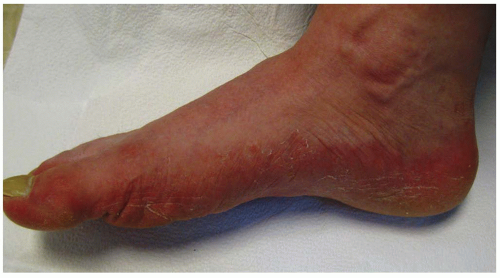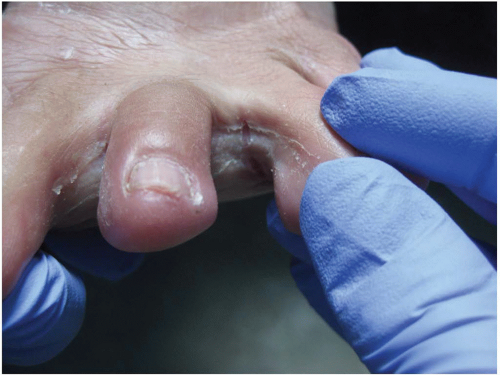DRUG |
INDICATIONS |
SIDE EFFECTS |
INTERACTIONS & MONITORING |
CONTRAINDICATION & CAUTION |
Griseofulvin (pregnancy category C) |
Adults: 500 mg daily (except tinea pedis & onychomycosis, 1 g daily) |
Usually well tolerated but may have: rash, hives, headache, fatigue, GI upset, diarrhea, photosensitivity |
CYP3A4 inducer (decrease levels): OCPs, warfarin, and cyclosporine increases alcohol levels |
Pregnancy (or intent) Avoid: alcohol use |
Peds: Microsize: 10-15 mg/kg/day given daily or b.i.d. or 125-250 mg for 30 to 50 lb and 250-500 mg for >50 lb
Ultramicrosize: 3-5 mg/kg/day given daily or b.i.d. or 125-187.5 mg for 35-60 lb and 187.5-375 for >60 lb
Off-label use by experts: commonly use microsize at 20-25 mg/kg/day and ultramicrosize at 10-15 mg/kg/day Improved absorption with fatty meal Duration
Capitis: 4-6 wk; corporis: 2-4 wk; pedis: 4-8 wk; cruris and barbae: till clear; fingernail: 4 mo; and toenails: 6 mo |
Monitor: baseline CBC, BUN/Cr, LFTs Repeat 6 wk |
Contraindicated in liver failure or porphyria |
Terbinafine (pregnancy category B) |
Adults: 250 mg daily Onychomycosis: fingernails for 6 wk and toenails for 12 wk
Off-label use: tinea corporis, pedis, capitis, barbae, and candidiasis |
Headache, GI upset, visual disturbance, rash, hives, elevated LFTs |
Inhibits metabolism of drugs using CYP2D6 |
Caution with hepatic and renal disease |
Peds:
Lamisil granules for capitis (>4 yr old): 125 mg/day for <25 kg; 187.5 mg/day for 25-35 kg; and 250 mg/day for >35 lb for 2-4 wk |
Drug interactions: TCAs, antidepressants, SSRIs, b-blockers, warfarin, cyclosporine, rifampin, cimetidine, caffeine, theophylline |
Avoid if history of lupus |
Monitor: baseline LFTs, CBC, BUN, Cr; repeat in 6 wk; more often if symptoms or immunosuppressed |
Fluconazole (pregnancy category C) |
Adults: 150-200 mg Vulvovaginal candidiasis: 150 mg as a single dose only. If recurrent, 150 mg weekly Oropharyngeal candidiasis: 200 mg. Take 2 orally on the first day, then one daily for 2 wk |
Headache, GI upset, abdominal pain, rash, diarrhea |
Inhibits metabolism of drugs using CYP2C9 |
Caution if renal or hepatic disease QT prolongation Arrhythmic condition |
Peds:
Oropharyngeal candidiasis (6 mo and older): 6 mg/kg/day orally on day one, followed by 3 mg/kg/day for 2 wk |
Monitor: baseline LFTs Repeat in one month |
Contraindicated in severe liver disease |
Itraconazole (pregnancy category C) |
Adults
Onychomycosis:
Toenails and/or fingernails—continuous 200 mg daily for 12 wk
Fingernails only—pulsed therapy, take 200 mg b.i.d. for 1 wk, then off 3 wk. Repeat 1-2 times |
GI upset, abdominal pain, diarrhea, constipation, decreased appetite, rash, pruritus, headache, dizziness, elevated LFTs |
Inhibits metabolism of drugs using CYP3A4 |
Patients with ventricular dysfunction or congestive heart failure |
Peds:
Off-label use only
Improved absorption with food, especially acidic foods |
Caution: use H2 blockers and PPIs, calcium channel blockers, lovastatin, simvastatin, ergot alkaloids |
Contraindicated in chronic renal failure |
Monitor: baseline LFTs.
Repeat/month
Less risk of elevated LFTs with pulse therapy |
Note: In 2013, the FDA advised limited use of systemic ketoconazole in view of liver injury, adrenal gland problems, and drug interactions. Oral ketoconazole should not be used for mucocutaneous infections or first-line treatment for any mycotic infection unless it is life-threatening or alternative therapy is not tolerated or available. There are many off-label uses of systemic antifungals that can be safe and effective treatments for dermatophyte and yeast infections. Primary care providers should understand the risks, benefits, and efficacy of off-labeled prescribing, or refer recalcitrant or severe cases to dermatology. |











